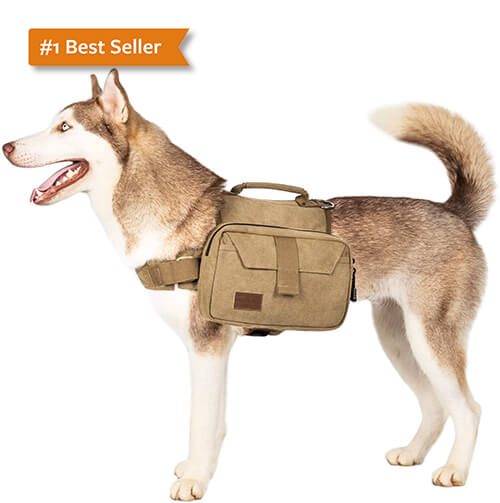There’s nothing more enjoyable than seeing my dog’s reaction when I ask him if he wants to go for a trail day hike. Before I’m even able to utter half of the question, he (Oscar) is halfway out the door.
His failed attempt at standing on hind legs, his tail wagging a hundred reps per minute. It’s a glorious sight to see. However, in the beginning, backpacking with dogs was not all fun and games.
I could tell Oscar resented the long scary outdoor dog hikes in often hot or cold terrain. Gone was his comfy dog bed, replaced by wilderness that challenged his fitness levels.
How To Make Backpacking With Dogs Work
Your dogs paws that are used to carpet flooring now show blisters and odd scrapes. Today, he loves thru-hiking as much as any of the most experienced backpackers I’ve met.
Whether you and your doggo are new to thru-hiking or have some miles under your belt, make sure to read this article for some useful methods to get your dog ready for backpacking.
With the gradual implementation of these tips and exposure to the outdoors. There’s no doubt you will have a pet that is comfortable and confident in the open backcountry.
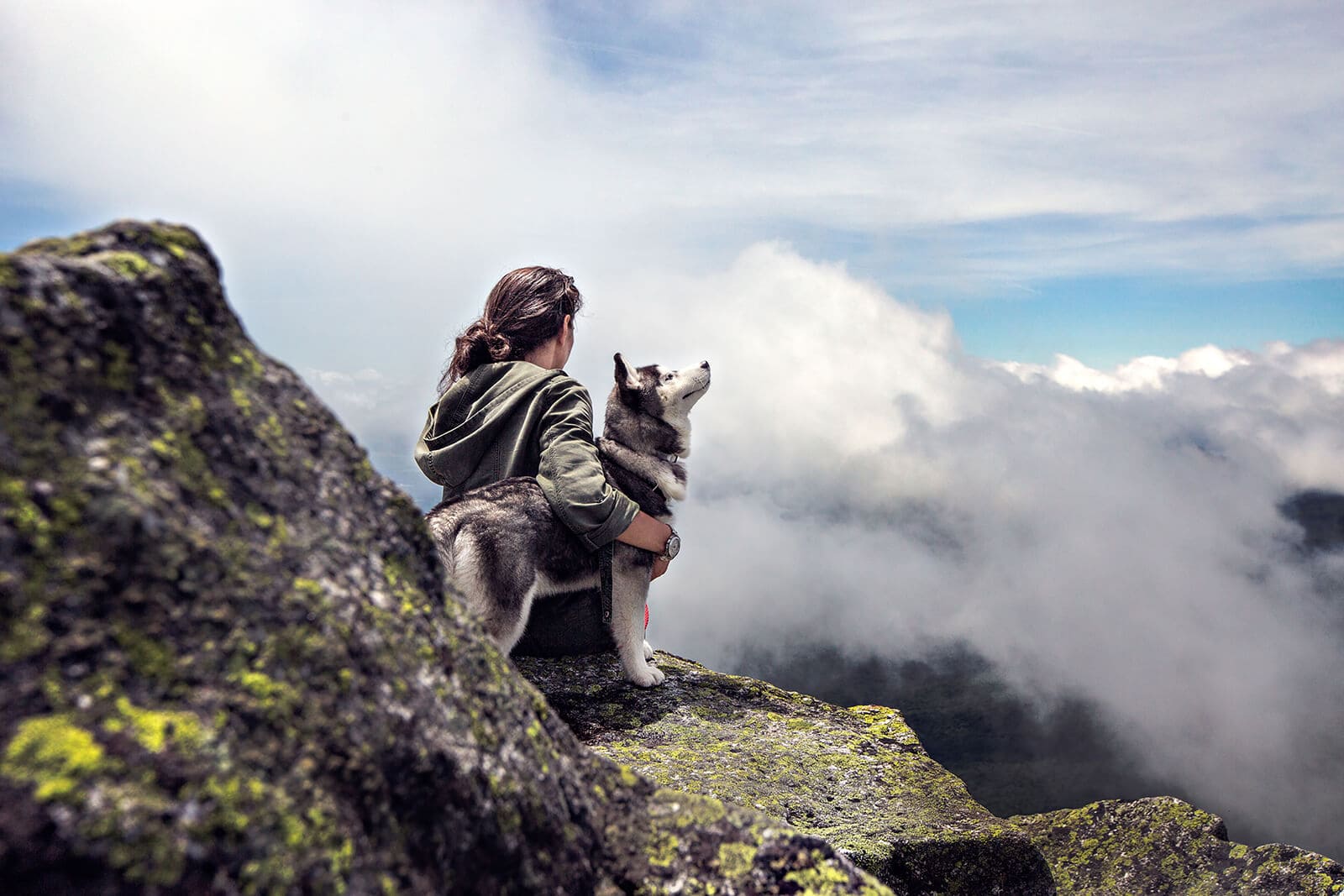
Getting your dog ready.
Backpacking with a dog, Is your pooch suitable
The human-canine friendship dates back as far as 30,000 years. To this day, most, if not all dogs owners are protective of their dogs, a feeling that is very much reciprocated. We tend to treat them with their best interest in mind.
A dog owner protectiveness and disbelief of our pets’ abilities can often lead to the dismissal of hiking with a dog. I often hear many excuses, such as I’d love to go on dog backpacking trips with but “insert excuse.”
He’s too small, she’s too old, my doggo is too much of an indoor pet.
But it’s hard to gauge your dog’s love and enjoyment of the outdoors. Especially if they have never been. Of course, there are real physical and mental conditions of a dog that do keep them from being outdoors.
But if your passion is exploring the wilderness and your best friend is a healthy, happy dog. Then dog backpacking trips is the best of both worlds.
Dog breeds body type.
Unfortunately, there isn’t one perfect breed or best-hiking dogs for backpacking. But there are excellent hiking dog breeds that are better suited physiologically for navigating terrain, than others.
Dogs like the Kelpie and the Australian Cattle Dog are great examples. Both possess good stamina, have lean bodies, and historically were bred as working canines.
Shorter thick-set bodyweight dogs like Thor, a British Bulldog who recently won the National Dog Show, will struggle on trails. His physical traits that secured first prize, the stocky, short body, and shallow muzzle.
Would become inefficiencies during backpacking. A dog of this body type would require extra rest breaks during activity.
Surprisingly in my experience, it’s the smaller dogs that seem to thrive in the wilderness. Jack Russells are well known for bringing their curiosity, energy, and speed to the trail.
Their positivity makes them great outdoor companions. I recently shared the path with an eight-year-old Jack Russell named Toby.
I found myself having to hasten my stride to keep up. In the end, we took fewer breaks than expected and ended up finishing the route much earlier than expected.
Toby’s little body and shorter legs didn’t slow us down as I would have expected. Also, an added benefit of hiking with a dog that is miniatures is that you can pick them up and handle them with ease.
This is effective if you need to get them out of harm’s way or over an obstacle.
Just because your dog doesn’t pass the eye test, then you shouldn’t pass on backpacking with your dog. But its something to keep in mind when allocating breaks and time to complete during day hikes.

Hiking with dogs, is fido physically ready?
Vet checkups.
Taking your dog to the Vet for a checkup is one of the first steps to consider before you set a hiking date. Sure, it’s safe to assume that you keep your dog in a healthy condition; a trip to the Vet can help to give you added reassurance.
The Vet will also provide medications and applications that can be used during the hike. These items include:
- Eye drops—for dust and debris
- Benadryl—for irritations caused by insect bites
- Vaccinations—these can include rabies, parvo and distemper virus and leptospirosis
- First Aid Kit, Gauze and patches—supportive and preventative wraps and bandages.
Your Vet may discover an underlying ailment. They can also provide a snapshot of your dog’s current physical fitness status and body weight.
Another benefit of seeing a vet is that the professional can teach you emergency procedures such as the application of bandages and medicines and tick removal.
Expert advice will, in the end, help you determine if hiking is going to be beneficial for you and your dog.
Is your dog ok on a leash?
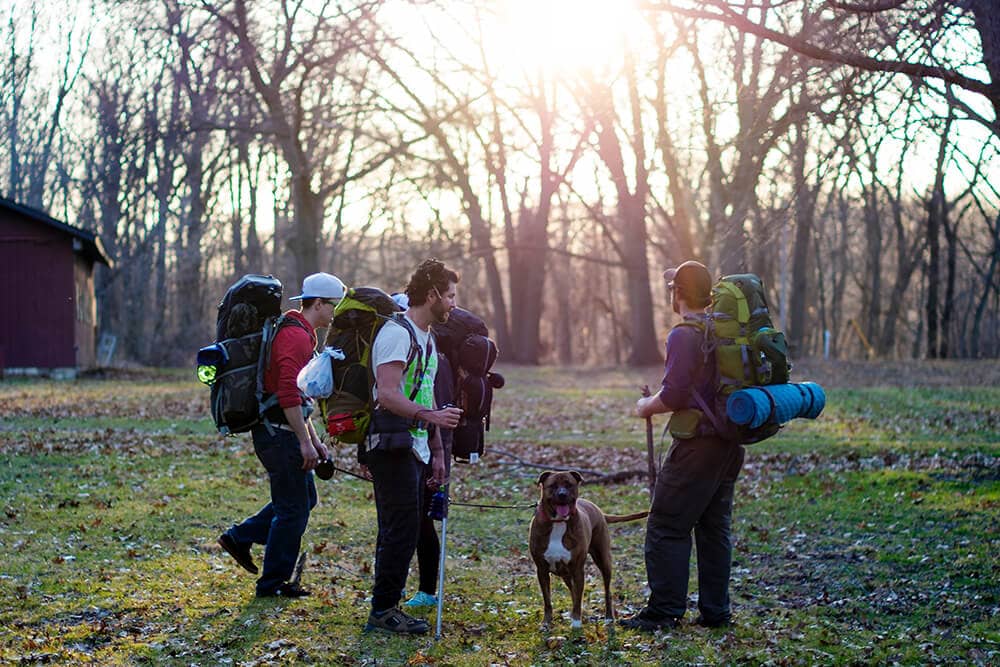
Your dog may be going to have to remain on a leash for extended periods. Now, if your dog is well trained and will walk at your pace without pulling, there is no problem.
But imagine you are trying to have an enjoyable walk in peaceful surroundings, and your dog is always pulling.
Unless you can train your dog to walk well, you may find that the constant tugging will stress and wear out your dog.
Start a trail-training regimen.
It’s perhaps not a bright idea to take your dog on a two-day hike when he has never completed a two-hour walk before. Take your dog for walks of increasing length to prepare it.
Planning and preparation.
Choosing a route.
Wherever you live, you will find that there are rules for controlling your dog. In the UK, where there is far less wilderness than the USA, the standards are perhaps more stringent. If taking your dog hiking, you should ensure that it does not harass wildlife or livestock.
This may mean that you are required to keep your dog on a lead. Your choice of route should take this into account. If in doubt, use Google to search for relevant websites such as the National Trust, or National Parks in the UK, that explain the requirements.
It is also wise not to go for the hardest route on your first hike with your dog. Using a difficult trail especially on your first backpacking trip together makes it harder to keep an eye on your dog, and give your dog the proper training.
Stressful dog backpacking will also give you bad habits when training in first aid and leave no trace practices.
Terrain.
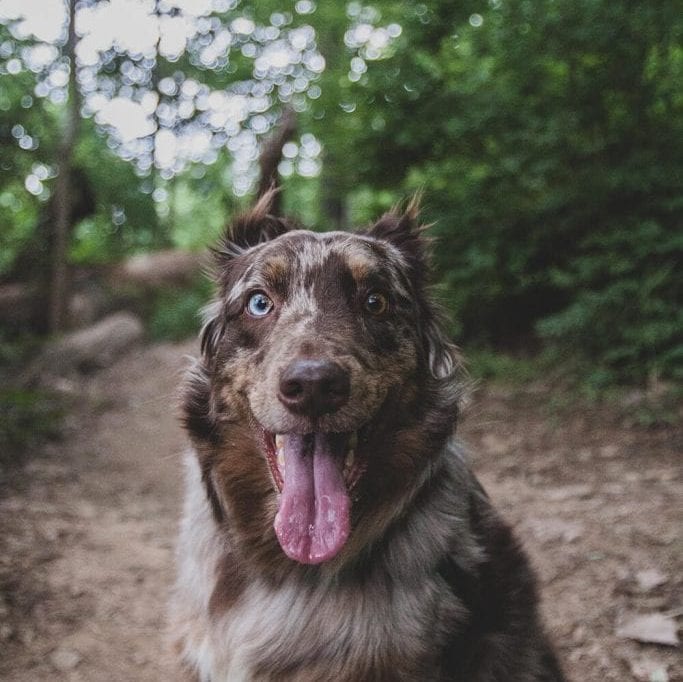
Your dog may well not be used to different types of terrain. Be aware that some dogs are scared of heights. A good test to try out at home is the stair and window test.
If you do have stairs in your house, observe how comfortable your dog gets when climbing the stairs. My dog will not climb open stairs even though he would like to get to use them when we are upstairs.
You can gauge if they are comfortable with heights by picking them up and showing them the view outside a window.
When I do take Oscar upstairs and hold him near the window, he looks away and does not like to look down.
Knowing this, I only choose National Parks with flat and open routes with less water sources. Sure I could try and challenge him with mountainous terrain.
But I would rather him enjoying the experience of backpacking rather than feeling anxiety throughout the whole backpacking trip.
Additionally, the reason to avoid water sources is that a dog can fall into a water source or end up drinking a stale creek bed and getting ill, so why risk it.
Another element to backpacking with a dog is the outdoor surface itself. Your dog may not be used to walking on loose rocks, and it could disturb him. There is also the chance of cuts to the feet if the stones are sharp.
In scorching weather, there is also the risk of burning the pads of his feet. New kinds of vegetation and different flora and fauna may be a challenge for the dog as well, primarily if he has only known an urban environment.
Take regular breaks to check your dog’s paws whilst always observing your dogs gait when walking. If they seem to be walking strange they could have a rock or a thistle stuck in the fur between their paw pads.
Livestock.
When backpacking with a dog in the UK, you may well come across cows grazing along public footpaths, and some may have calves. If the cow sees the dog be a threat, its maternal instincts may well kick in, and it will attack both the dog and you.
Steer clear of livestock, they will generally outweigh the both of you and can be territorial and possessive of their feeding areas.
Wildlife.
In the UK, you are unlikely to come across any dangerous wild animals or snakes. Not so in the USA and some other countries where depending on how far out in the wilds you travel, you may come across Predators and Snakes.
When planning a route, you should consider all these factors. If you have any doubts, it might be helpful to do some tests individually.
Make plans for emergencies and ensure you always know the quickest path to assistance.
Practice runs.
Before the big day comes, it’s best to get a few practice day hikes in so you can experience a few challenges in different conditions together and practice trail etiquette.
Start with hiking as long as a couple of hours. Next, try a similar distance with some of your dog’s hiking gear you will be taking on your planned hike. Then you can increase the load and alternatively the length of the walk.
Practice loading both you and your dog. You may want to see how they react to carrying their own gear in a dog backpack. Watch your dog, see if they are comfortable and can manage the load. Adjust as you go on if necessary.
As you walk, practice obedience training with the dog. Another thing to check is their conditioning, make sure your dog is not panting excessively and showing signs of fatigue.
If so make sure to take frequent or additional water and dog food breaks in the shade. Also, make sure your dog and you get plenty of practice runs which in turn becomes a good opportunity to get into the habit of leave no trace, this is picking up doggie leftovers straight away.
Does your dog seem to be enjoying the hike? Are they injured or limping? These are all the questions you need to ask in advance of the big hike.
On these practice runs, you should think about emergency scenarios such as, what if the dog was injured, bitten or exhausted could you carry them?
Backpacking with a dog gear.
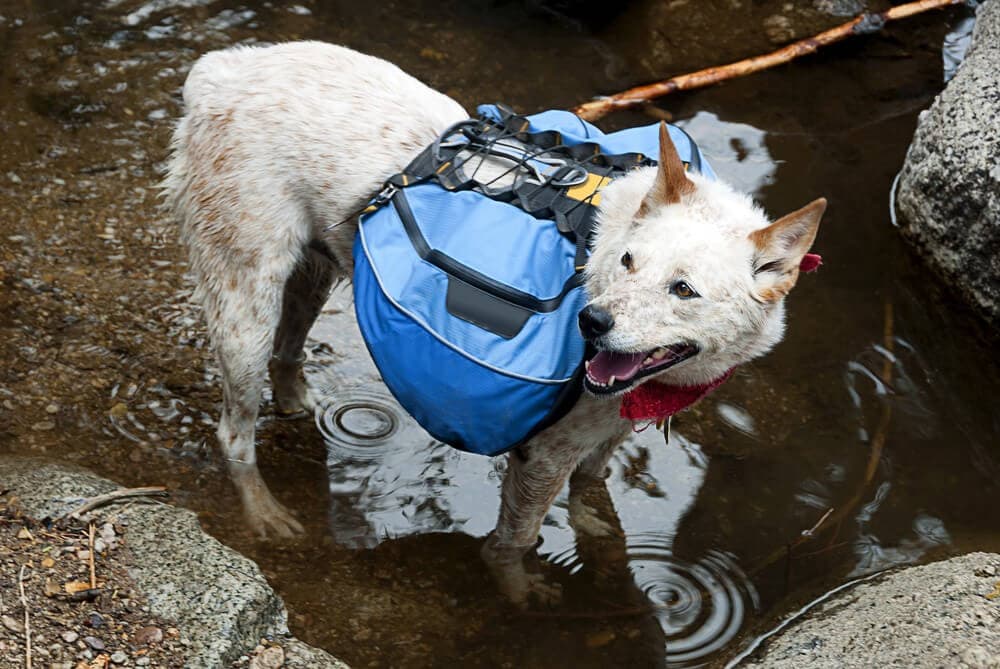
With the abundance of canine hiking gear on the market, it’s easy to get swamped on what to pack and what to leave at home.
Firstly, on your plan for the route, you should have considered the availability of water; however, you will still need to carry some water for your dog. You also need to bring backpacking dog treats and food as well, either dry or wet.
Then we come to the equipment: Bottles and bowls. I highly suggest a collapsible bowl with a large base, these are space savers and the wider the base the less it can tip over.
Further essentials to get are of course a dog sleeping mat or sleeping bag, a first aid kit and the all-important canince hiking leash. I prefer a retractable leash as it minimises the frequency that your pet will get tangled around you.
The obvious but it needs to be stated is to buy lots and lots of dog’s poop bags so you can leave no trace or unhealthy surprises.
Depending on the route and the time of year, you may well need to consider your dog’s feet. Have you ever tried walking along hot rocks or a hot beach barefoot? It hurts, doesn’t it?
You do not want your dog to get burnt or cut pads, so you may have to consider paw boots or canine shoes as protection for its feet.
Looking at wet and cold weather, you will also need to consider a dog coat, blanket, and towel for the dog. All the gear in the world won’t be of use if you don’t have the proper storage.
That’s why you should look at buying a Dog Backpack, which is a pack that can be cloaked over your canine. Often riddled with storage pouches that can house collection bags, dog food, water bladders, emergency kits, I cannot stress how essential they are.
When looking to buy one, you may want to try one on your dog with the proper adjustment. I suggest going to your local pet store for dog hiking supplies and to try on different styles.
You cannot test dog packs online and the back and forth returns if it doesn’t fit can be cumbersome. Each dog’s body is different, and you want to see if there is any rubbing on your dog that can irritate him or her during a long thru-hike.
Additionally, a feature I like to see on a Canine backpack is waterproofing, as well as drainage points. You want your dog’s food and items to remain dry inside the bag.
However, if your dog decides to go for a swim in the lake, you want the bag to have drainage points to let the moisture out.
Make sure to bring plenty of water, click here to read our article on Portable Camping Water Filters.
Backpacking with a dog—on the trail.
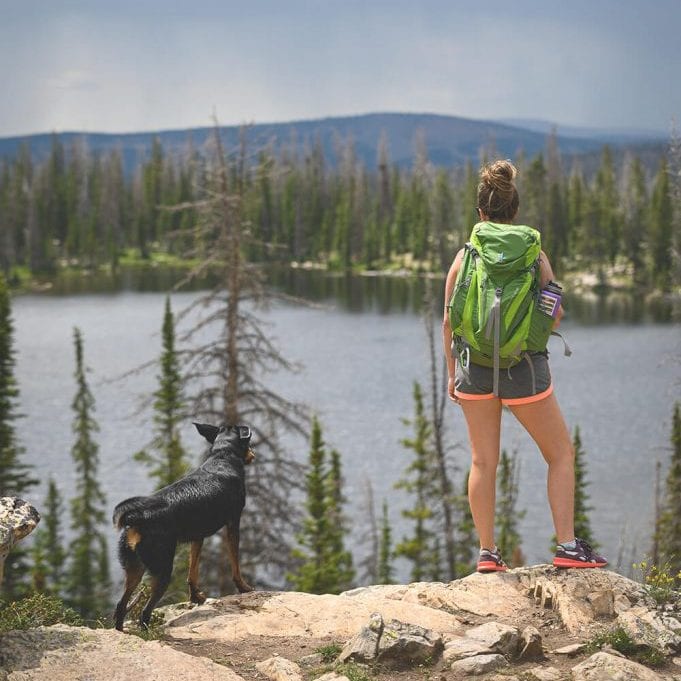
The critical thing to remember when on backpacking and hiking trip with your dog is to both follow whatever rules apply and observe etiquette or instructional signs.
If the rules say that when hiking you need to keep your dog leashed, it is usually for an excellent reason, so obey.
Keep your dog under control. Some people find it intimidating to see a dog rushing towards them. You may know it intends to greet the stranger, but they do not.
Let people you meet choose to approach your dog and fuss it rather than forcing it upon them. Restrict yourself to taking just one dog along.
You need to be able to control the dog at all times. You should always be aware of where your dog is and what it is doing.
As you and your dog get comfortable and confident, feel free to add another companion, whether they be dog or human.
A standard for you and your dog should be to leave no trace. As far as your dog is concerned, do not leave little piles of dog waste for other hikers to step into. But an abundance of dog poop bags and bag your dog’s waste and dispose of it correctly.
You can get biodegradable dog waste bags, and these can be buried over 20 feet from the trail at least to a depth of 8 inches. Do not just leave bags at the side of the trail.
Make sure to google your state or territories trail regulations and environmental requirements and trail dog etiquette before you head out so you can keep your dog safe.
After the hike.
After you return from the hike, you need to give your dog a good check over to ensure no damage has been done.
Check your dog’s paws, check whether he or she is eating regularly, limping, or showing any other signs of not being right. If you have used long shelf life dog food rations or items from the doggie first aid kit, make sure to replenish these supplies.
You may well have a few aches and pains yourself, so you both need to be careful. If you have a chance to go back in the direction of you walk, keep an eye out for any debris, doggie bags or leftovers that may have dropped during the hike, leave no trace is a great habit to sustain a clean hiking trail for next time.
This is a good time for you to consider the whole experience and make a note of what worked and what did not, so next time you can make it even better.
Conclusion.
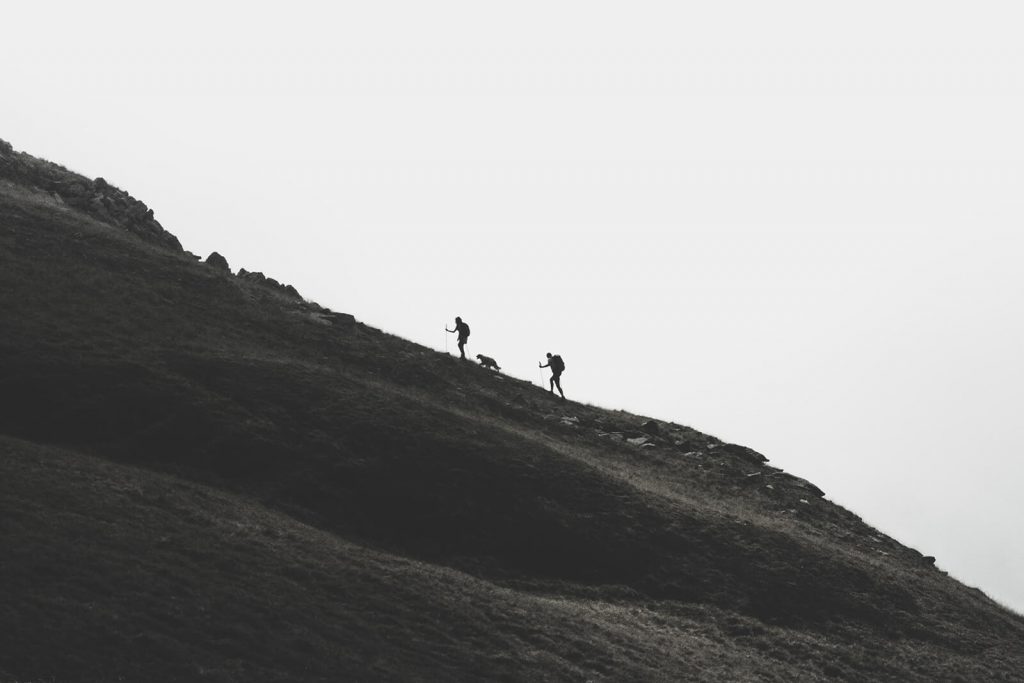
The journey of Backpacking With Dogs was an exciting voyage of discovery as much as it was a team-building experience. I came across some real experts in wilderness canine training.
To see how passionate and how caring they were, sometimes putting their dog’s welfare first was inspiring.
As my dog, Oscar is now ten; I’m expecting a few more years of enjoyment of the outback as a team. If you are hesitant or just thinking about hiking with your dog for the first time, I sincerely suggest going ahead.
There’s nothing more satisfying than seeing your best friend roam free in their natural surroundings.


